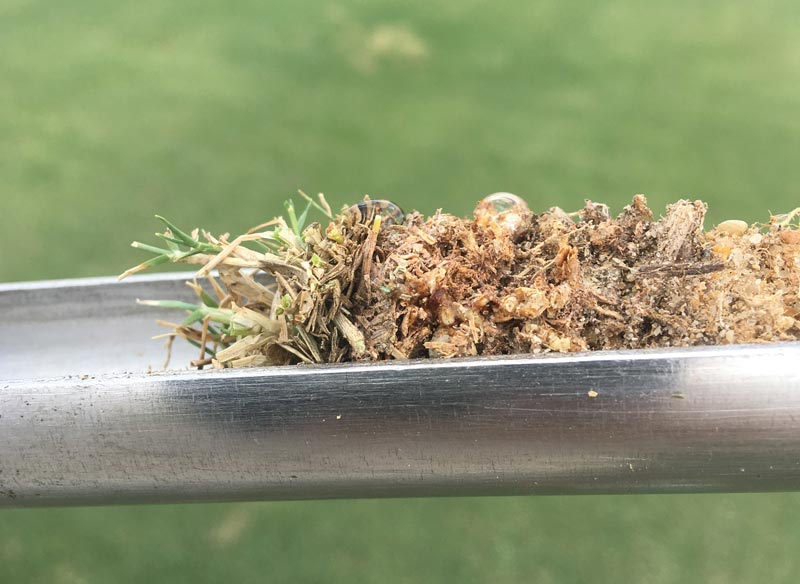
Photo by Will Jackson Bowling
Editor’s note: This research was funded in part by the United States Golf Association. The project is in progress and was featured in the Cutting Edge section of GCM.
As golf course irrigation water quality continues to decline, sand capping of golf course fairways is increasing. A three-year Texas A&M study evaluated the influences of sand capping depth by subsoil texture on Tifway bermudagrass fairway quality and performance.
Sand capping depths of 0, 2, 4 and 8 inches were evaluated atop both clay and loam subsoils. Through traditional water-release curve measurements, an “optimal” capping depth of 8 inches had been recommended to achieve a balance of air to water-filled porosity in the root zone.
However, at the conclusion of the study, the 8-inch depth was found to result in overly dry surface conditions, periodic decline in quality, and hydrophobic conditions in the thatch layer.
The “suboptimal” 0-, 2- and 4-inch sand caps all outperformed the 8-inch cap for all measured parameters. Because of the high levels of sodium (~300 ppm) in the irrigation water used in the study, rapidly increasing subsoil SAR (sodium adsorption ratio) was also noted.
Based on the findings of the earlier study, the objectives of this study are to evaluate longer-term (years 4 to 6) changes in turf performance, soil physical properties and cultural management requirements of sand-capped fairway plots. We are assessing low- to high-input management intensities involving various combinations of wetting agents and gypsum application techniques to maintain sand cap and subsoil physical integrity.
Results to date suggest that a single high-rate application of gypsum early in the year may be more effective at reducing subsoil SAR than monthly low-rate applications throughout the season. Wetting agents are showing the greatest benefit with deeper rather than shallower capping depths.
— Will Jackson Bowling; Benjamin Wherley, Ph.D.; Kevin J. McInnes, Ph.D.; and Tony L. Provin, Ph.D., Texas A&M University, College Station, Texas
Teresa Carson is GCM’s science editor.